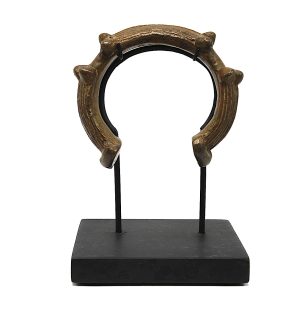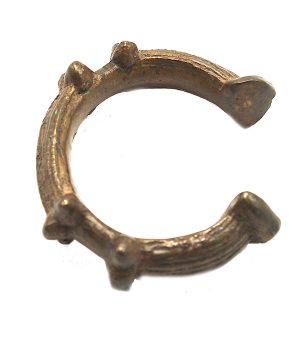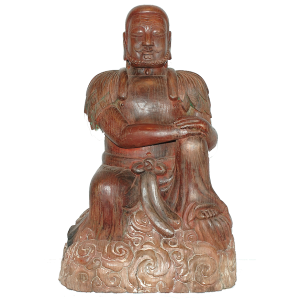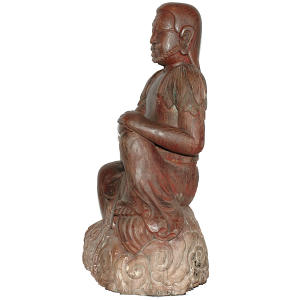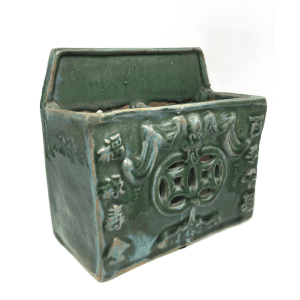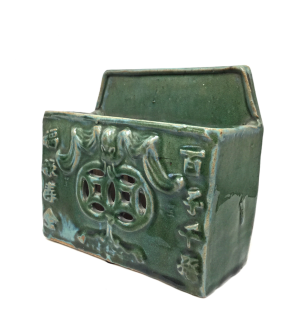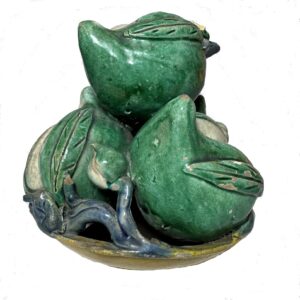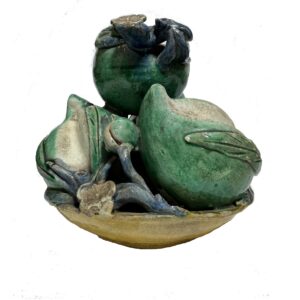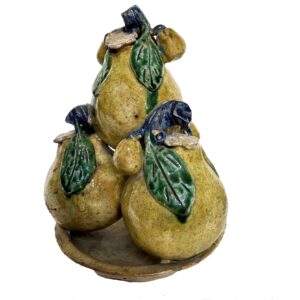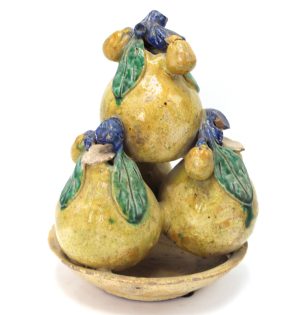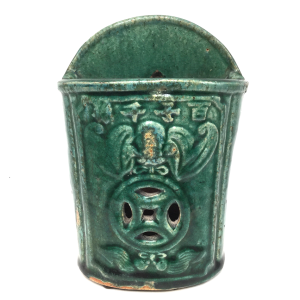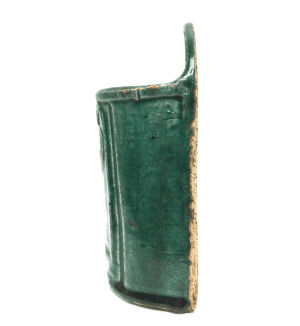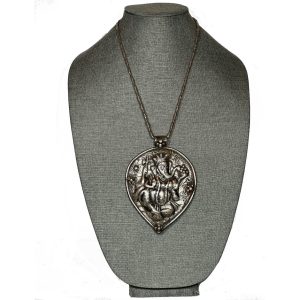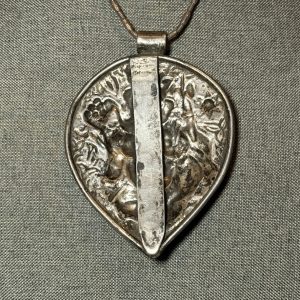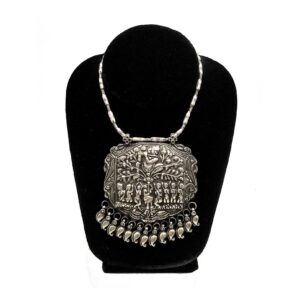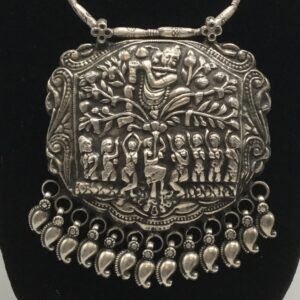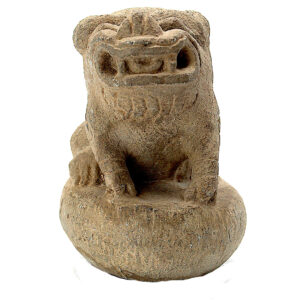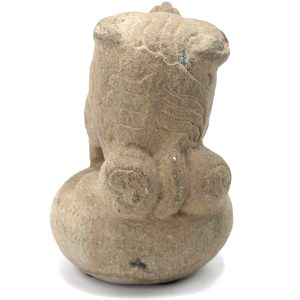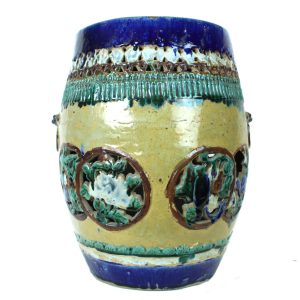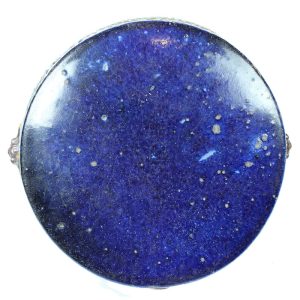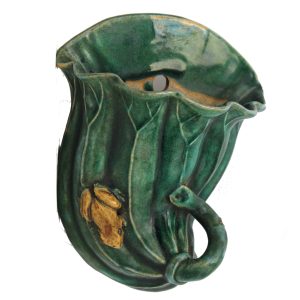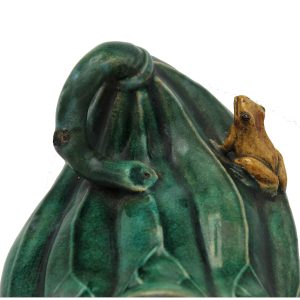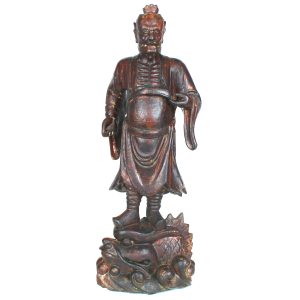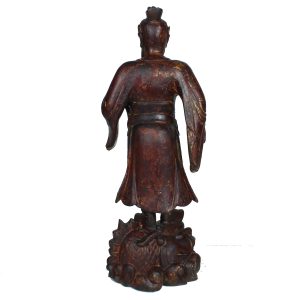Showing 85–96 of 200 results
-
Sale!


$195.00 Original price was: $195.00.$155.00Current price is: $155.00.
H: 2.75” W: 3.625” Thick: 1” Circum. 9.375” | FREE SHIPPING IN CONTINENTAL u.s.
Antique 3-sections Senufo manilla with incising, raised bosses and flattened discs at ends. Very heavy, used to store wealth, trade for purchases, bridal dowries or ceremonies. Fine patina, wood and metal stand.
-
Sale!


$4,600.00 Original price was: $4,600.00.$3,900.00Current price is: $3,900.00.
H: 30.5″ W: 19.25″ D: 11.75 | CALL 213-568-3030 OR EMAIL [email protected] FOR SHIPPING
Masterful carving of Shen Nong, revered hero and reputed father of both Natural Medicine and Agriculture. Benevolent, sitting on cloud, leaves on shoulders. One of 3 sovereigns who contributed to well-being of humanity. Especially fitting for health care, pharmaceutical or agricultural professional or associated with tea.
-
Sale!


$185.00 Original price was: $185.00.$135.00Current price is: $135.00.
H: 7.125″ W: 8.375″ D: 3.75″ | FREE SHIPPING WITHIN CONTINENTAL U.S.
Shiwan 2 part chopsticks holder with top holes for hanging and bottom ones for drainage. Chopsticks were wedding gifts from mothers to daughters with auspicious wishes: sons as soon as possible, blessing for prosperity, happiness and fertility, life-giving rain and abundance.
-
Sale!


$450.00 Original price was: $450.00.$295.00Current price is: $295.00.
Ht: 5.5” Dia: 6” | FREE SHIPPING WITHIN CONTINENTAL U.S.
Shiwan stoneware peaches and lotuses on footed bowl auspicious symbols associated with springtime, fertility, long healthy life for many generations and therefore are propitious gifts for birthdays, especially for the elderly.
-
Sale!


$375.00 Original price was: $375.00.$295.00Current price is: $295.00.
H: 8.75″ DIA: 6.75 ” | FREE SHIPPING WITHIN CONTINENTAL U.S.!
Shiwan stoneware glazed sculptures of fruit symbolizing life and new beginnings to place on temple or home altar. They augment plates of fresh stacked fresh fruit to honor ancestors. These pears symbolize long life.
-
Sale!


$115.00 Original price was: $115.00.$95.00Current price is: $95.00.
H: 7.375″ W: 5.125″ D: 2.5″ | FREE SHIPPING WITHIN CONTINENTAL U.S.
Chopsticks are ubiquitous in Chinese culture, and are often included in a bride’s dowry as a wish for a speedy arrival of many sons. This Shiwan ware green glazed wall pocket chopsticks holder has characters wishing for many sons and grandsons and an upside down bat holding a coin for “blessings in front of your eyes.”
Decorative utilitarian Shiwanware pieces are recognized for their fine modeling, vivid expression, and colorful apple-green and drip glazes. Chopsticks were commonly stored in wall pockets with a hole for mounting. Covered with auspicious symbols, they were often part of a bride’s dowry as “chopsticks” is a pun for “speedy arrival of sons.”
-
Sale!


$440.00 Original price was: $440.00.$375.00Current price is: $375.00.
Ht: 5.125″ W: 3.75″ D: 0.625″ | FREE SHIPPING within continental U.S.
Large and heavy silver pendant with 4 armed Ganesh in betel shape frame reaching for his favorite treat modak sweet dumplings with coconut. As the remover of obstacles Ganesh pendants worn for good luck . The coin silver chain is included.
-
Sale!


$695.00 Original price was: $695.00.$595.00Current price is: $595.00.
Ht: 3.625” W: 3.5” D: .75″ | FREE SHIPPING WITHIN CONTINENTAL U.S.
Rare antique high grade silver amulet, high relief of Lord Krishna sitting in the Tree of Life playing his flute serenading the Gopis. Truly magnificent pendant symboling Hindu belief in the interplay between deities and the human soul.
-
Sale!


$195.00 Original price was: $195.00.$155.00Current price is: $155.00.
H: 4.5″ Dia: 3.25″ | FREE SHIPPING WITHIN CONTINENTAL U.S.
This stone flu lion is not an elegant protective beast, it’s just a friendly pet hanging out. He probably lived in a garden and is looking for another one with people like old wonderful pieces to remind them not to take themselves too seriously.
-
Sale!


$1,275.00 Original price was: $1,275.00.$895.00Current price is: $895.00.
H: 19.5″ DIA: 15.75″ | CALL 213-568-3030 OR EMAIL [email protected] FOR SHIPPING
Ceramic barrel shaped garden stools with cut cobalt blue auspicious double coin images as wealth symbols and 2 Tao tieh masks in relief with pierced rings to symbolically avoid gluttony, greed and desire.
-
Sale!


$285.00 Original price was: $285.00.$225.00Current price is: $225.00.
H: 8.25” W: 6.75” D: 3.5” | FREE SHIPPING WITHIN CONTINENTAL U.S.
Wall pockets are used to hold chopsticks and flowers to bring good fortune. This Shiwan pocket has frog and a lotus that together symbolize nurturing energy and transformation. Great cozy accessory for feng shui and a wonderful wedding gift.
-
Sale!


$1,095.00 Original price was: $1,095.00.$795.00Current price is: $795.00.
H: 15.5″ W: 5.5″ D: 4.5″| CALL 213-568-3030 OR EMAIL [email protected] FOR SHIPPING.
God of Literature, Books and Writing, Education, Learning and Examinations, Wen Chang is the patron saint of scholars. Thin, surly, demon like with exposed ribs and facial distortions, he stands on a dragon’ head among waves. Unique wonderful carving that would look spectacular on a desk.
End of content
End of content

